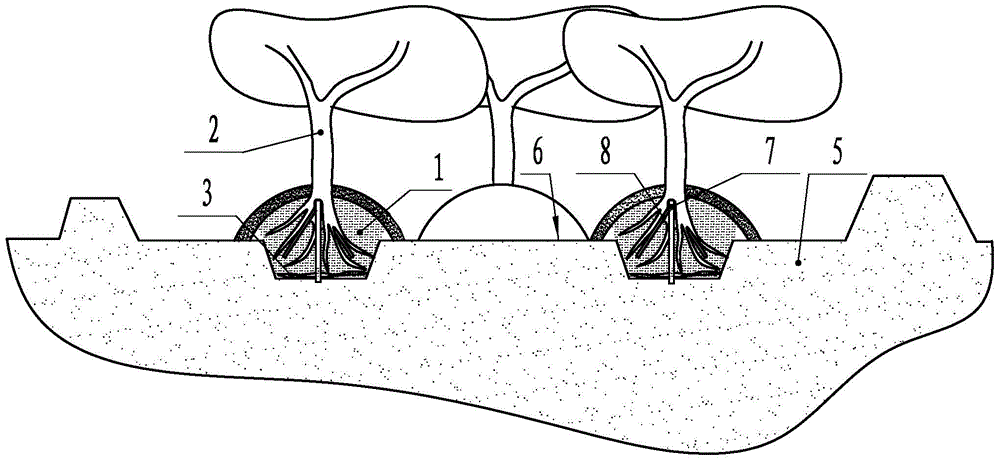Method for forest planting by accumulating wastes in mounds
A technology of planting afforestation and polymer, applied in land preparation methods, forestry, organic fertilizers, etc., can solve problems such as unfavorable plant growth, poor nutrient absorption, slow tree growth, etc.
- Summary
- Abstract
- Description
- Claims
- Application Information
AI Technical Summary
Problems solved by technology
Method used
Image
Examples
Embodiment Construction
[0029] The technical solution of the present invention will be further described in detail below in conjunction with the accompanying drawings.
[0030] Polymer heap tree planting method, comprises the following steps:
[0031] 1) Collect garbage;
[0032] 2) Pit digging: Dig a pit on the ground with a diameter greater than 2 meters and a depth greater than 1 meter;
[0033] 3) Building frame: put vertical rod 7 in the middle of the pit, and set oblique rod 8 around the vertical rod 7 to form an umbrella-shaped skeleton;
[0034] 4) Backfill: backfill the soil 5 mixture 1 mixed with garbage into the pit until it is filled up, add soil 5 to the top of the pit to form a raised mound, and form a ditch 6 between adjacent mounds;
[0035] 5) Planting: plant an arbor seedling 2 in the middle of the mound, and plant shrub seedlings around the arbor seedling 2.
[0036] In order to fully decompose and absorb the garbage in the heap. Before 2) the frame building step, fill a layer ...
PUM
 Login to View More
Login to View More Abstract
Description
Claims
Application Information
 Login to View More
Login to View More - R&D
- Intellectual Property
- Life Sciences
- Materials
- Tech Scout
- Unparalleled Data Quality
- Higher Quality Content
- 60% Fewer Hallucinations
Browse by: Latest US Patents, China's latest patents, Technical Efficacy Thesaurus, Application Domain, Technology Topic, Popular Technical Reports.
© 2025 PatSnap. All rights reserved.Legal|Privacy policy|Modern Slavery Act Transparency Statement|Sitemap|About US| Contact US: help@patsnap.com

